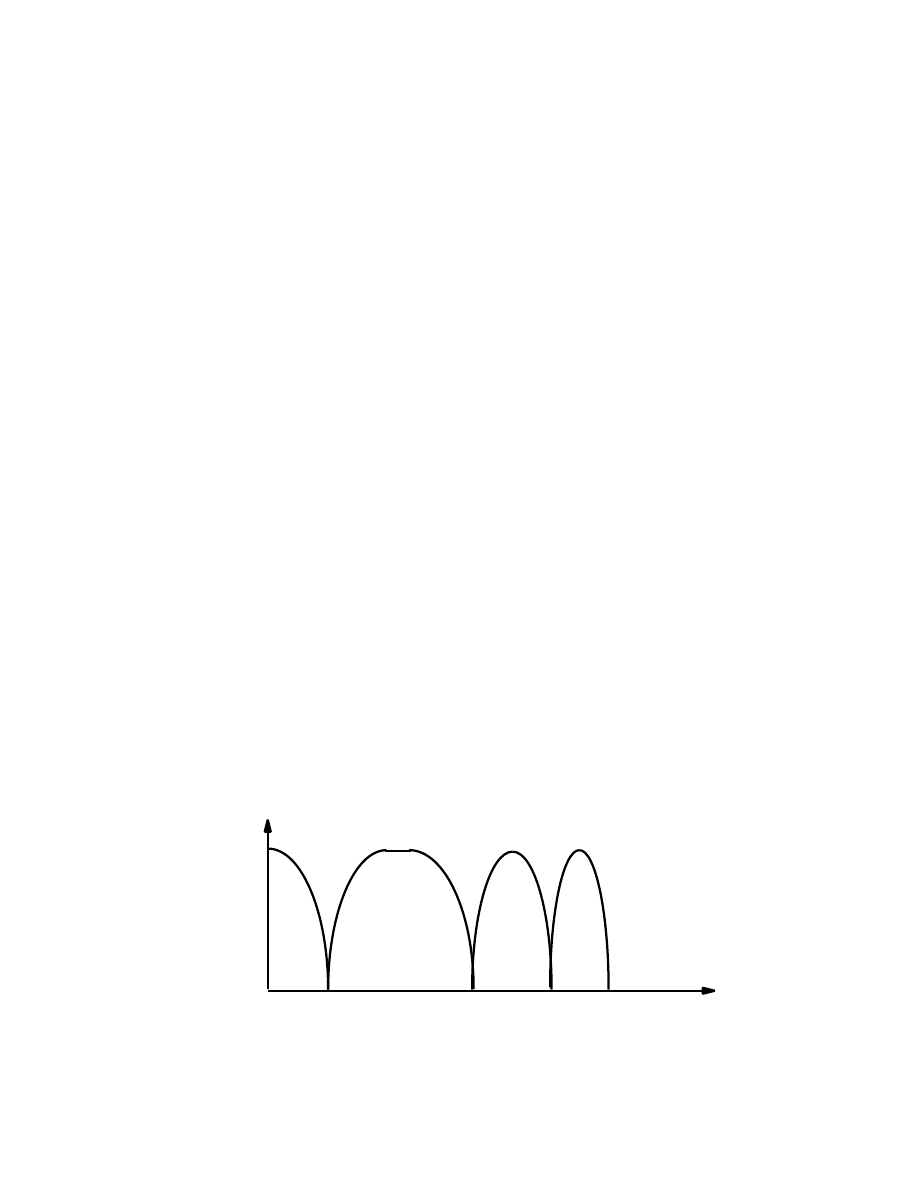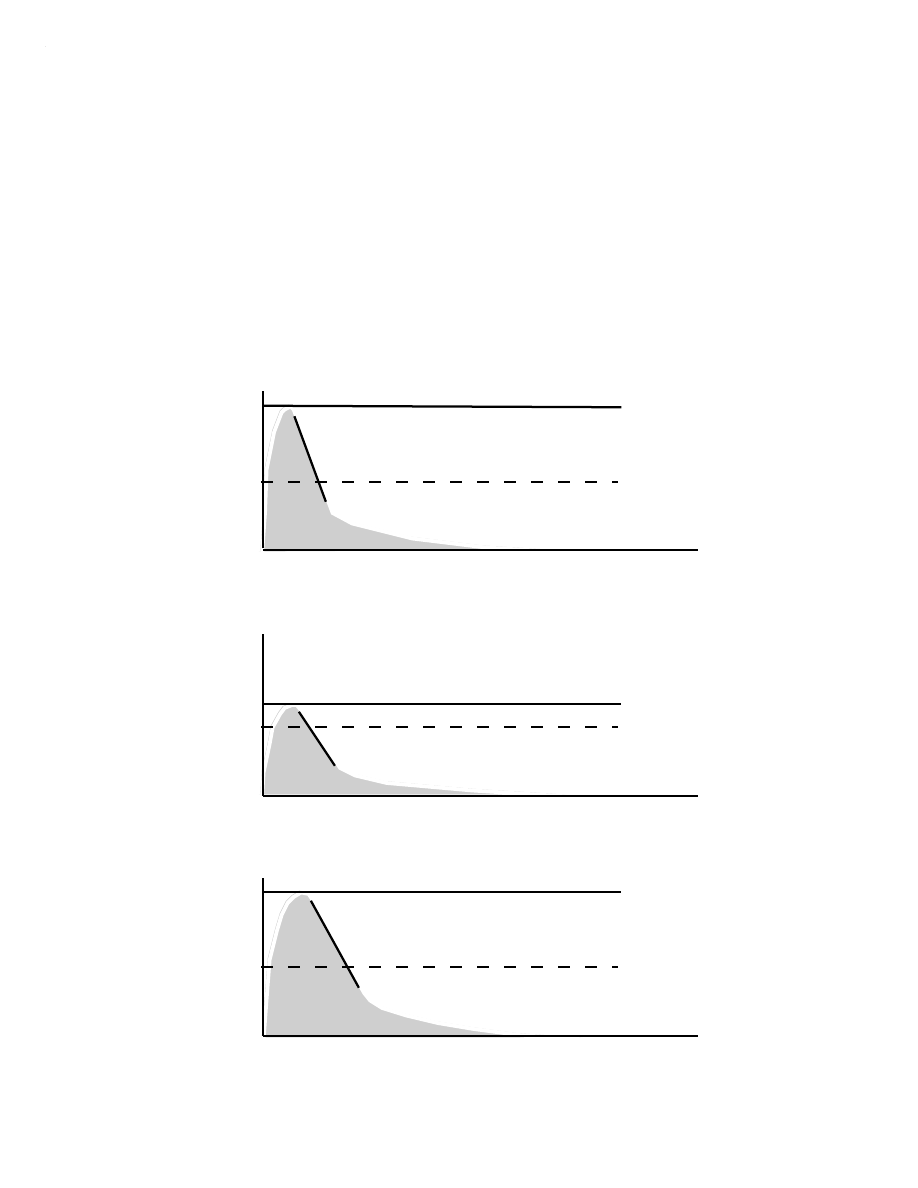ВУЗ: Казахская Национальная Академия Искусств им. Т. Жургенова
Категория: Учебное пособие
Дисциплина: Не указана
Добавлен: 03.02.2019
Просмотров: 12326
Скачиваний: 6

C
closed loop: A closed loop system is one which modifies its behavior based on the differ-
ence behavior between an output variable and a set point, i.e., it relies on feedback to deter-
mine its output. The opposite of open loop, an example of a closed loop system is a house-
hold thermostat. In audio, the main use for closed loop systems is in power amplifier output
stages. See bootstrap.
cloth track: See Foley.
CLV: Constant Linear Velocity. As opposed to CAV, a mass storage system that has a disk
whose speed varies to keep the data rate at the read/write head constant, regardless of the
location of the data on the disk. The CD standard specifies CLV format.
CMRR: Common Mode Rejection Ratio. In a balanced line connection, the common mode is
the noise whose phase is common on both lines. The degree of attenuation of the common
mode by a differential amplifier is called the rejection ratio, and like other level-modulating de-
vices, the output change is measured in dB.
cocktail party effect: The phenomenon of human aural discrimination among sounds of
equal loudness, e.g., the ability to hear one conversation out of many at a party. Related to
auditory masking.
coda: Musical symbol ( ) which references a section of music which is to be repeated from
or repeated to, as in “D.C. al Coda,” meaning “play from the beginning to the Coda.” A
coda is a musical passage which gives a sense of completion to a movement or work, possi-
bly an extended cadence or a substantial passage. A codetta is a short musical passage which
links the subject and answer in a fugue, or at the end of the first passage of a sonata.
codec: COderDECoder. A device that digitizes an input waveform, eliminating redundant
information, reducing the number of bits needed to carry the same data, then decoding the
data at the receiving end, hopefully with a high degree of sonic transparency. See PCM,
PWM.
code window: A display of the SMPTE timecode numbers, usually corresponding to each
frame of picture viewed on a monitor. These numbers appear in a window that replaces a
portion of the program image, usually at the bottom right of the screen. Depending on the
equipment used, the timecode data in the window can be either generated in real-time from
the source of the SMPTE timecode data, or have been recorded as a permanent part of the
picture on a particular copy of a pre-recorded program. BITC is generally recorded onto
copies of footage that will be used for off-line editing. The source of the SMPTE timecode
data in this latter case is the sync track or control track of the original video footage.
coding: The process of altering the form of a signal, such as from analog to digital. Or, the
coding may be used to allow a transformation of the signal not possible in its original form
such as in noise reduction. Or, coding may be used to take advantage of effects inherent in the
coding process itself, such as in PCM which allows recording and playback with low noise.
The complementary stage to coding is decoding, a process which attempts to reconstruct the
original signal, i.e., from digital back to analog for use with loudspeakers. See codec.
coercivity: The magnetic field strength required to bring any specific type of recording tape,
when fully saturated, to complete erasure. Measured in Oersteds, and abbreviated
H
c
.

C
coherence: The polarity relationship between two complex sounds or signals being com-
bined, measured at any instant. Total phase coherence indicates complete phase alignment,
or full signal reinforcement. Incoherence, to any degree, designates a partial to complete
phase difference, producing partial to total phase cancellation. The opposite of incoherent. See
also isochronous.
coincident pair: Also known as an X-Y or XY pair, this is a microphone configuration which
commonly uses two cardioid or figure-eight microphones mounted at right angles to one an-
other, the latter preferred only for special applications. This is called a coincident pair be-
cause the two microphones are mounted as closely as possible to each other so that the
sound being captured arrives at both microphones at exactly the same time, regardless of the
direction of the source. All coincident configurations have to use directional microphones in
order to create the necessary level differences between the two channels of the stereo system;
omnidirectional microphones do not produce level differences proportional to the angle of in-
cident sound. This technique is favored by many broadcast applications because of good
mono compatibility. Recording with a coincident pair is called XY recording in the US and the
UK, AB recording throughout Europe, and also crossed pairs, or normal stereo. In the US, “AB
recording” means a spaced pair. See also Blumlein pair, near-coincident pair. Contrast with
spaced pair.
coloration: Coloration is the term for subtle distortion which results in a change in the timbre
of a sound without that sound being otherwise noticeably distorted, such as a smearing type
of distortion produced by intermodulation distortion. More prevalent at high audio frequen-
cies.
color burst: See video black.
comb filter: A type of notch filter which produces a series of very deep notches, or dips, in
its frequency response. The spacing of the notches along the frequency axis is at multiples of
the lowest frequency notch. A comb filter is produced when a signal is time-delayed and
added to itself. Frequencies where the time delay is one-half the period and multiples of
these frequencies are cancelled when the signals are combined because they have opposite
polarity, usually used to filter out 60Hz hum and its associated harmonics. If the signals are
of equal strength, the cancellation is perfect and the notches are infinitely deep on a decibel
scale. See common mode.
Also called timbral interference cues.
Amplitude, dB
Log Frequency
F1
F2
Comb Filter
F3
F4

C
combining amplifier: An amplifier, also called a summing amplifier, that combines two or
more signals prior to sending them to a single audio bus, signal processor, tape recorder
track, or other destination. For example, on a mixer the aux send controls on all channels feed
a combining amplifier whose output can be routed to a reverb system, cue or headphone
amp, the monitor amplifier, etc. There are also devices which are active combining amplifi-
ers, called an ACA, as well as passive combining networks,
combining network: A typically passive network in which two or more signals are com-
bined before being sent to a single bus, signal processor, or other destination.
combo: A combination of loudspeaker(s) and amplifier in one unit, usually portable. Used
by guitarists, keyboard players, etc. for stage amplification.
Comma of Pythagoras: See diatonic comma.
commag: A technical term for composite magnetic print.
common mode: Common mode refers to equal voltages induced in the two wires of a sig-
nal-carrying pair. In a balanced line circuit, the signal voltages are of opposite polarity in the
two signal wires. Any voltage which appears with the same polarity on each wire is called a
common-mode voltage. Usually noise, such as a 60Hz hum, is induced in audio cables
equally and in the same direction, and so is a common-mode voltage. If the signal is con-
nected to a differential amplifier input, the common-mode voltages will cancel, while the sig-
nal voltages, being of opposite polarity on each input terminal, will add together. This is the
reason why balanced lines are less prone to induced noise from external influences. See
CMRR.
common mode rejection: The measurement of how well a balanced circuit rejects a common
mode signal. See also CMRR.
comopt: A technical term for composite optical print.
compander: Short for compressor/expander. A compander is a device for noise reduction in
audio devices such as tape recorders. The compander will reduce the dynamic range of the
signal before sending it to be recorded. The compression makes the softer passages louder
so the dynamic range recorded on the tape is less than it would be if it were not compressed.
Then, on playback of the tape, the signal is expanded; that is, the softer passages, which are
too loud on the tape, are reduced in volume to match the original signal, restoring its dy-
namics. In the expansion, which is similar to a fast-acting AVC, the noise introduced by the
tape recording process is effectively reduced because the music, when loud, masks the noise,
and during the soft passages, the volume is turned down, making the noise comparatively
softer. Digital companding allows a device to achieve greater apparent dynamic range with
a lower bit depth. See dbx, Dolby noise reduction.
companding converter: An A/D-D/A pair which uses a non-linear scale, i.e., one that has
larger steps towards peak amplitude and smaller steps towards minimum amplitude. This
scale increases the ability of the converter to resolve small changes in low amplitude signals,
reducing distortion, but with the penalty of increased noise. The overall effect is that of a
compressed analog input signal and a resulting expanded digital output. See compander.

C
compatibility: (1) The degree to which different pieces of equipment can be used together
or are interchangeable, e.g., whether a tape recorded with one type of NR can be replayed on
a tape player equipped with another type of NR. (2) See mono compatibility.
complementary: Any pair of audio signal processing procedures which perform two equal
and opposite processes on the signal, one before recording, the other after playback. Noise
reduction and tape recorder pre- and post-emphasis are examples. See encoding.
completely filled: See 4-track.
composite equalization: The overall frequency response modification produced when a signal
passes through more than one equalizing circuit in the same device, or through several
equalizers in a series.
composite print: Film print that contains a sountrack.
compound time: See time signature.

C
compression: (1) The process of reducing the dynamic range of an audio signal by reducing
the peaks so as to be able to boost the low levels. For every dB of compression applied, the
S/N ratio is worsened by 1dB, assuming that the make-up gain is set so that the maximum
levels of the compressed and uncompressed signals are the same, as the quieter parts of the
original signal, plus any noise contained in these regions, will be raised in level. (2) A dy-
namic-range problem in loudspeakers caused by nonlinearity under conditions of high input
power levels. At very high levels, the acoustic output increases more slowly or ceases to in-
crease altogether as the input power increases, producing nonlinear distortion, i.e., a frequency
response curve very different for very high levels. (3) Data compression used on digital
audio files is a process ADPCM, MACE, for example. (4) The opposite of rarefaction whereby
a quantity of data is reduced in order to occupy less storage space. See ATRAC.
Amplitude, dB
Time
Threshold
Original Peak Level Restored
Signal After Make-Up Gain
Signal After Compression
Amplitude, dB
Time
Threshold
New Peak Level
Amplitude, dB
Time
Threshold
Peak Level
Original Signal